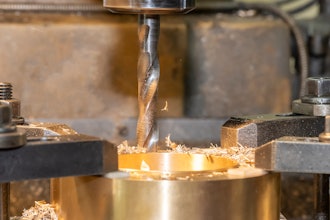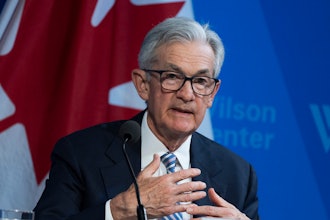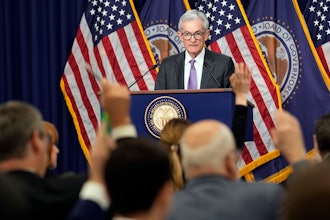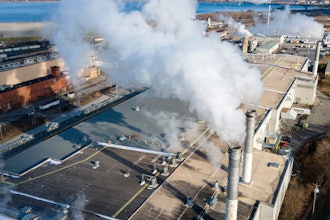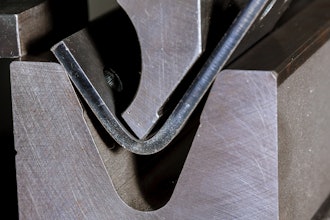WASHINGTON (AP) — U.S. companies remained cautious in September and held back on orders for long-lasting manufactured goods that signal investment plans. Weak business investment has contributed to slower economic growth.
The Commerce Department said Thursday that orders for durable goods jumped 9.9 a percent last month. While it was the biggest gain in nearly three years, most of the September gain was driven by a tremendous spike in aircraft orders, which are very volatile and plummeted in the previous month.
When taking out transportation, orders rose just 2 percent. And demand for core capital goods, such as machinery and equipment, were unchanged in September. Core capital goods are considered a proxy for business investment plans. Those orders rose only slightly in August after steep declines in July and June.
Peter Newland, an economist at Barclays, said the report "painted a soft picture of business demand" in the July-September quarter. He said the weakness had prompted him to trim his estimate for economic growth in the quarter from 2 percent down to 1.8 percent.
Durable goods are products expected to last at least three years. Orders can fluctuate sharply from month to month.
Demand is sharply lower this year, which has weakened manufacturing and hampered economic growth. High unemployment and low pay have kept consumers from spending. Businesses have held back on investing in machinery and equipment. And slower global growth has dampened demand for U.S. exports.
Economists are concerned that businesses could pull back further if Congress doesn't reach an agreement to avert steep tax hikes and government spending cuts scheduled to take effect in January.
There is some indication that U.S. factory activity could be improving. A closely watched survey from the Institute for Supply Management, said manufacturing grew in September for the first time in four months. It was buoyed by a jump in new orders.
Americans also boosted their spending at retail businesses in September, buying more cars, appliances and furniture. Stronger consumer spending could help offset declining demand from overseas.
Still, the decline in U.S. manufacturing has slowed job growth. Manufacturing employment dropped by 16,000 in September after falling by 22,000 in August.
The weak job market has been a key topic in this year's presidential election, which is down to its final days. Voters will have one final employment report to consider, which comes out four days before Election Day.
The economy is not growing fast enough to generate much hiring. Growth slowed to a tepid annual rate of 1.3 percent in the April-June quarter, down from 2 percent in the previous quarter. Most economists see growth staying at or below 2 percent in the second half of the year. The Commerce Department will issue its first estimate of growth in the July-September quarter on Friday.
Donald A. Norman, Senior Economist for the Manufacturers Alliance for Productivity and Innovation (MAPI), has weighed in with his opinion on the durable goods report:
“The manufacturing sector is showing resiliency as new orders for manufactured goods increased by 9.9 percent in September, reversing a 13.1 percent decline in August,” said Donald A. Norman, Senior Economist for the Manufacturers Alliance for Productivity and Innovation. “Much of the September increase was due to new orders for transportation equipment, which increased by 31.7 percent. Excluding transportation, new orders increased 2.0 percent, reversing the 2.1 percent decline from July to August. The monthly series on durable goods orders is often volatile because new orders can arrive, or disappear, in big blocks. New orders for durable goods have increased in four of the last five months. The overall trend in new orders this year indicates that while manufacturing sector activity has slowed, it nonetheless continues to expand.
“Industry groups reporting the largest gains in new orders in September included primary metals (up 4.1 percent), machinery (up 9.2 percent), and, as noted above, transportation equipment,” Norman noted. “Industries that saw orders decline included computers and electronic products (down 2.5 percent) and electrical equipment (down 2.7 percent). Orders for motor vehicles and parts were down 0.4 percent, an improvement from August when they were down 11.6 percent.”










